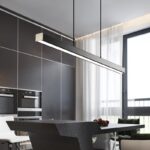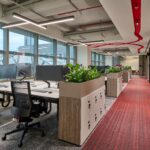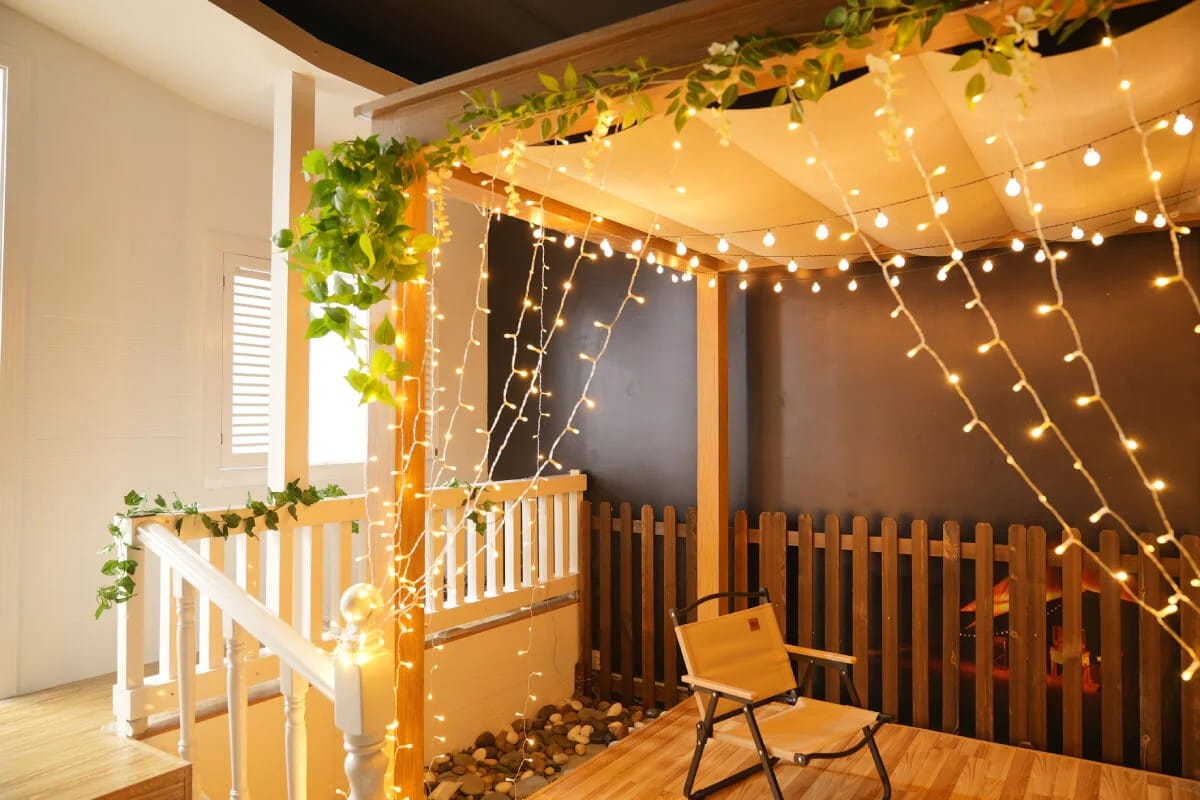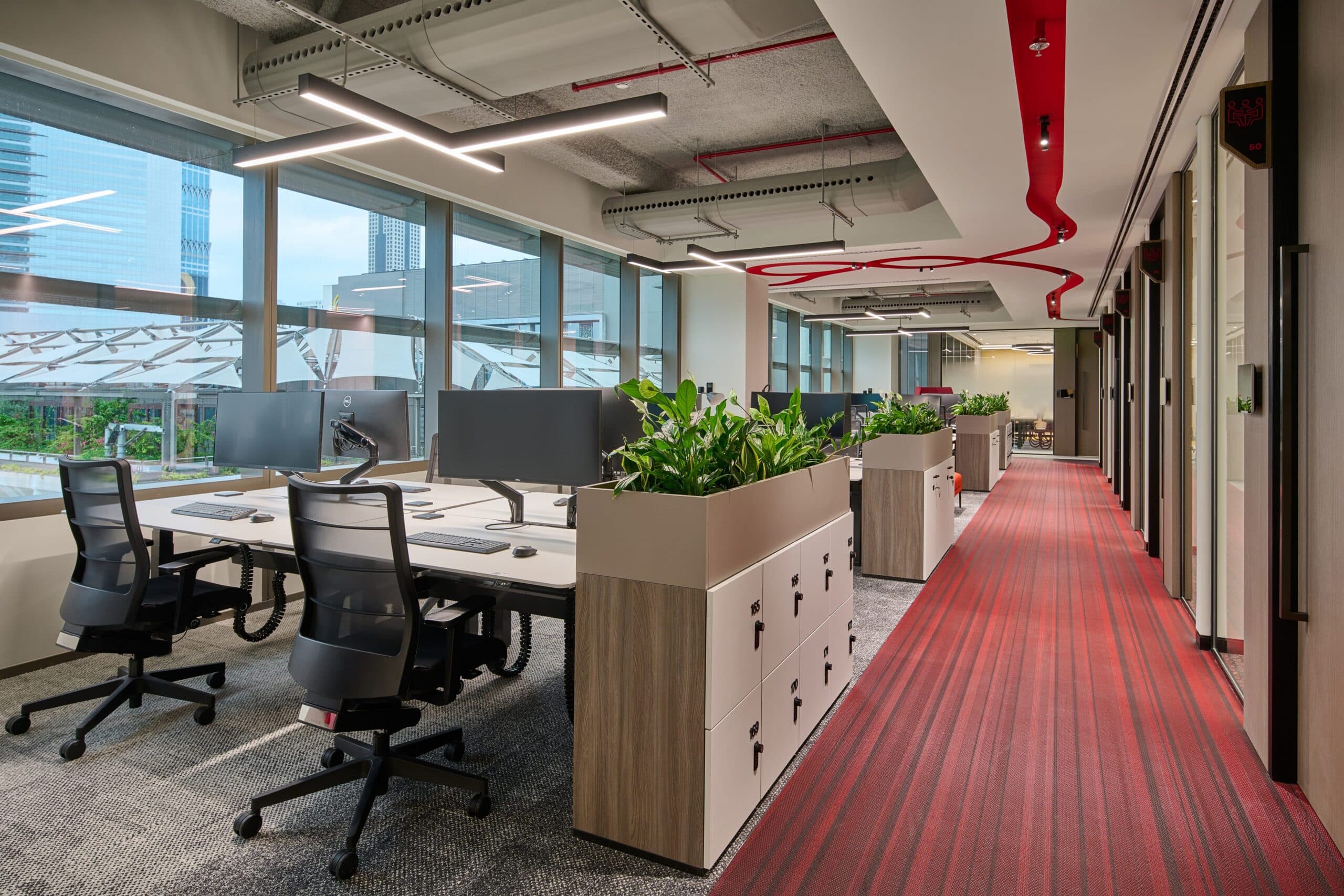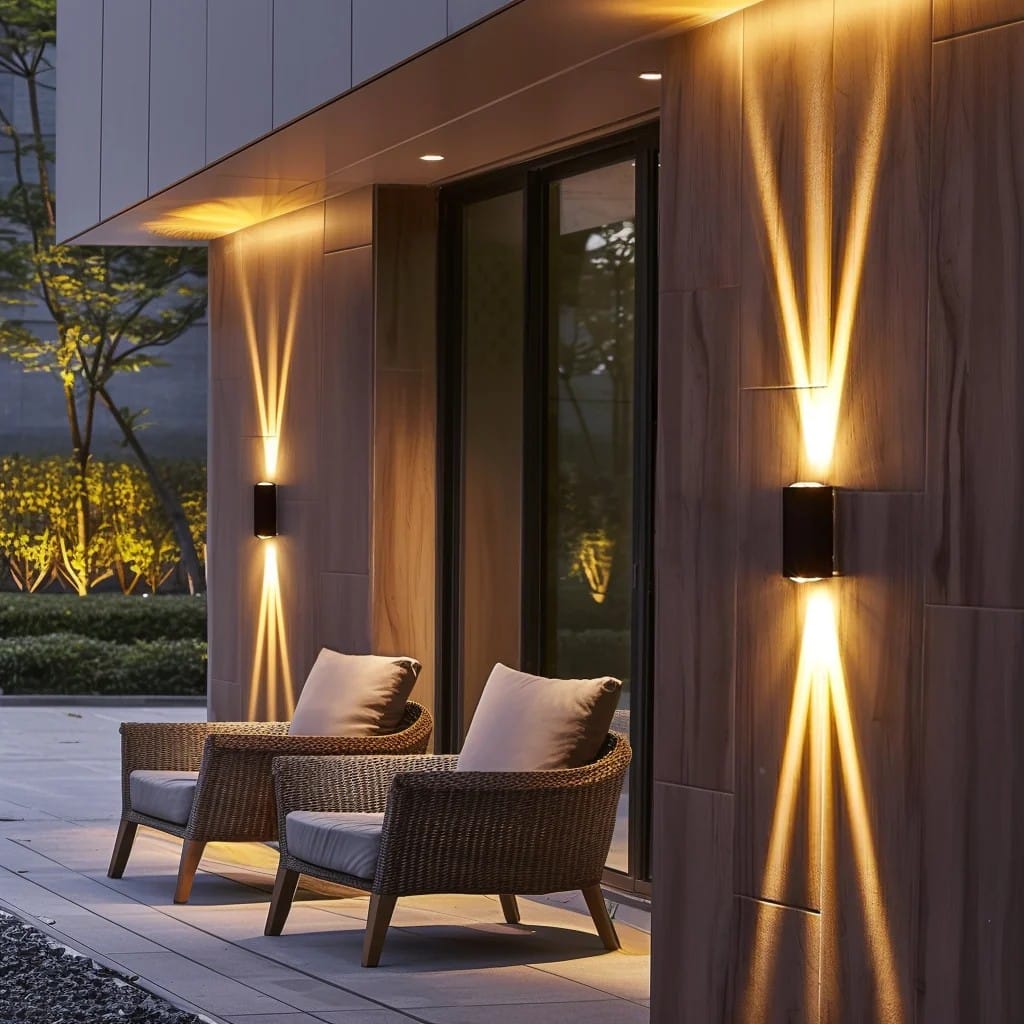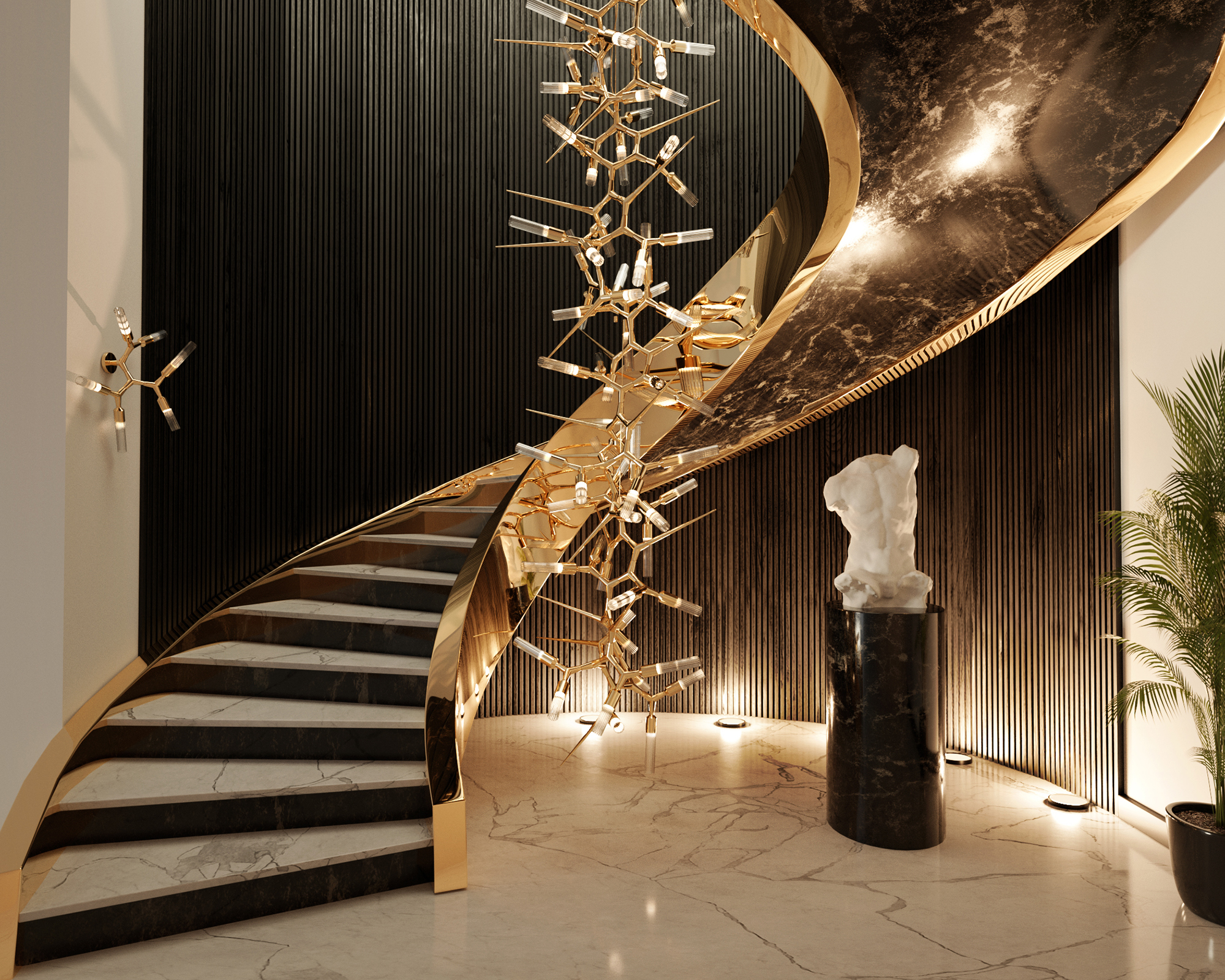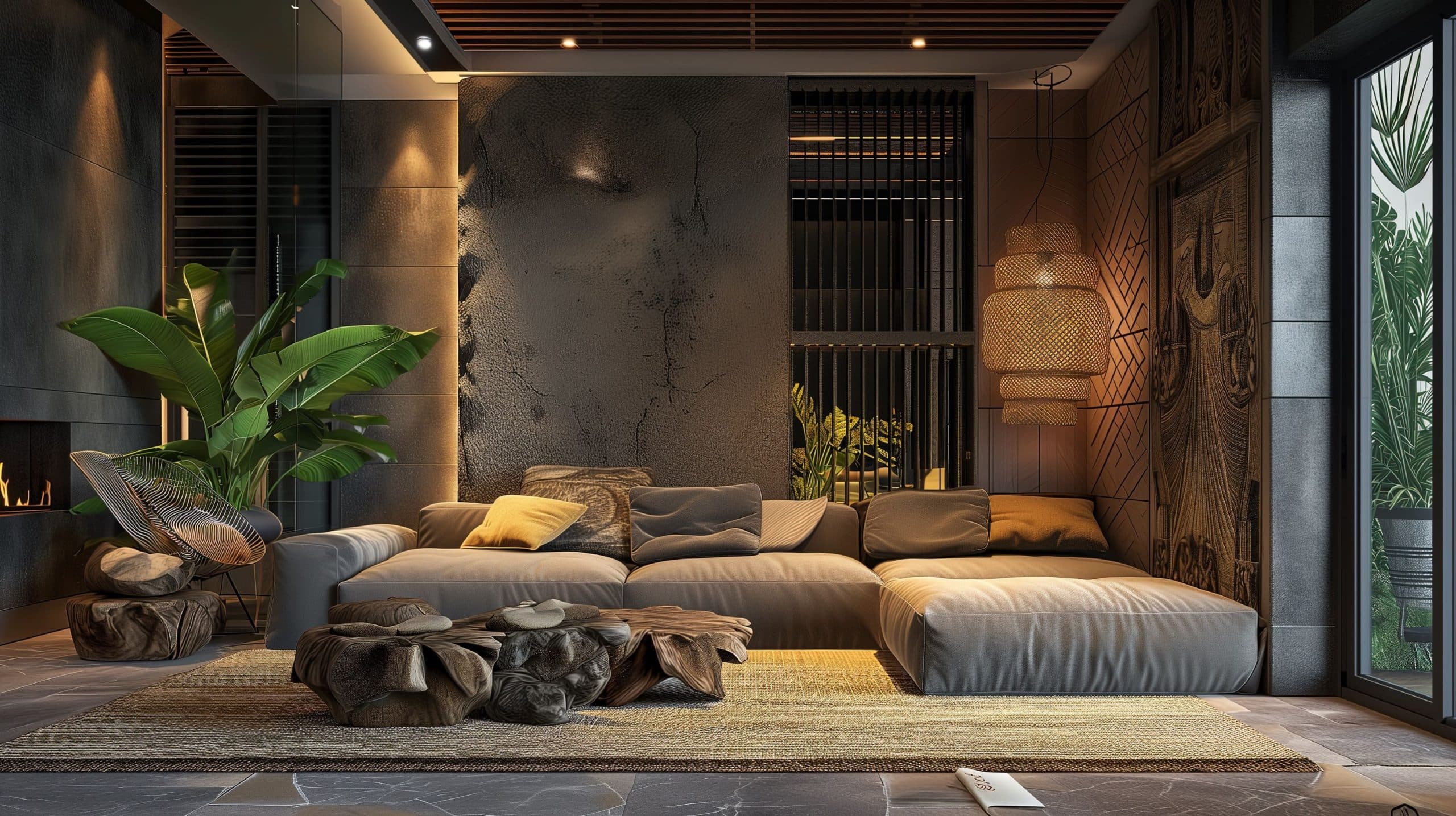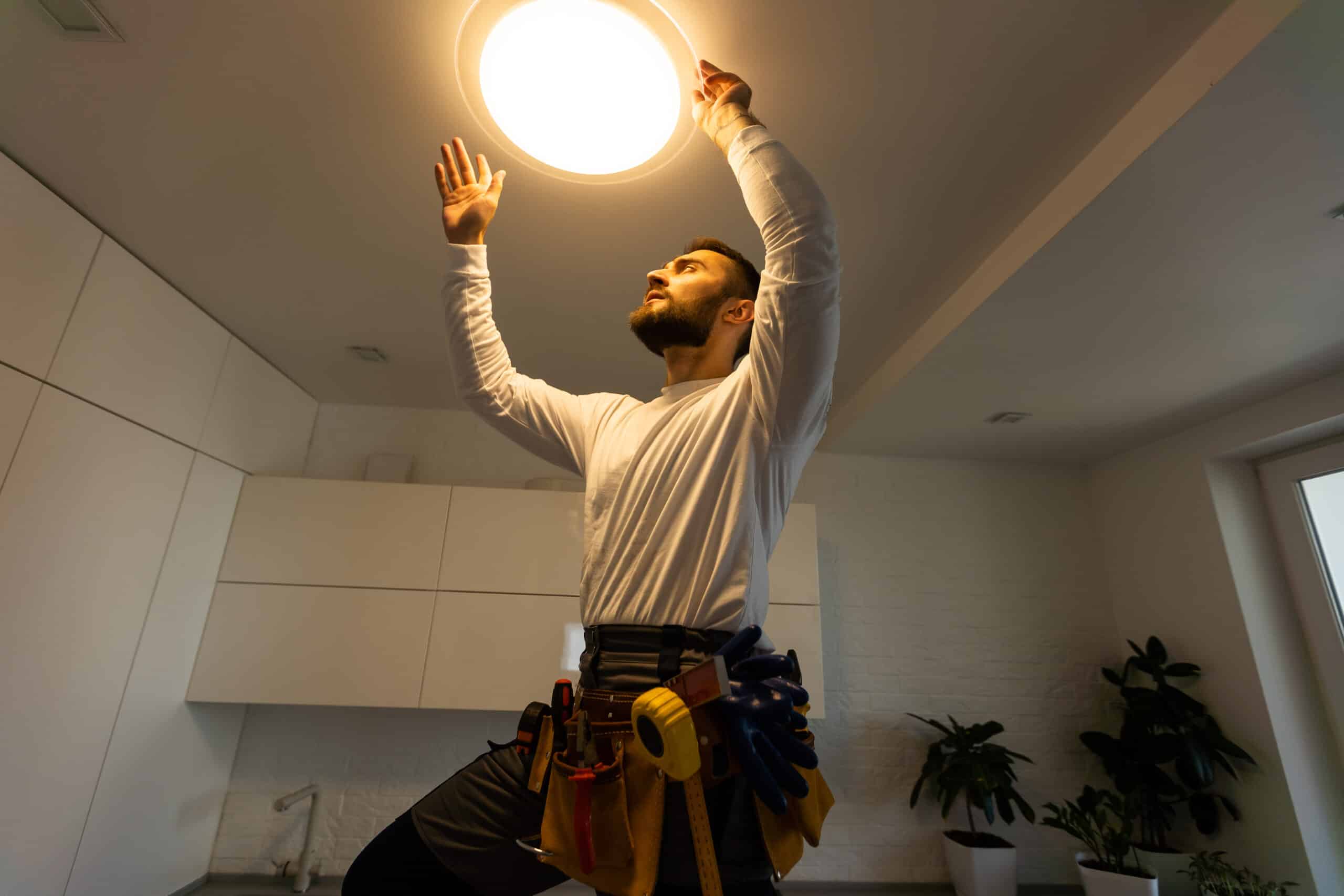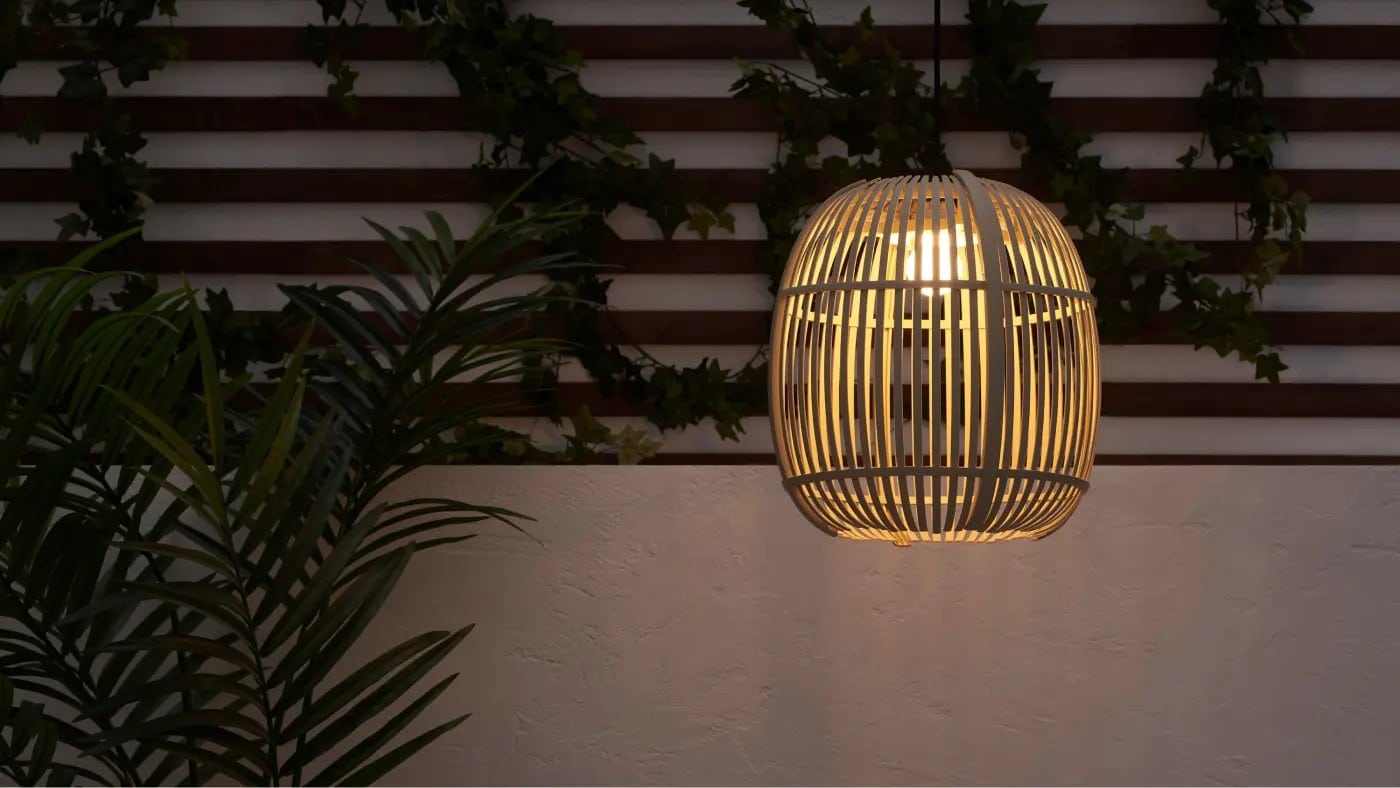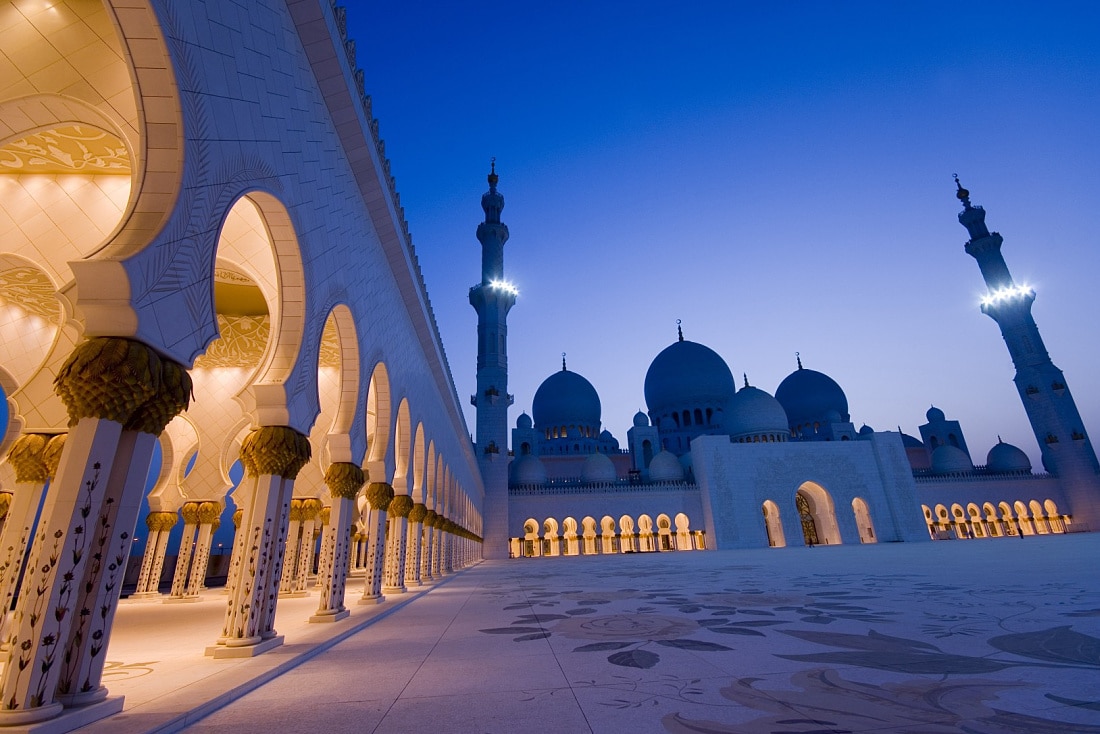
Mosque Lighting Design in the UAE
Table of Contents
If you’ve ever stood under a huge mosque chandelier and felt (as if by choreography) that the room shifts into prayer, that’s not accident.
In Islamic architecture, light is a theological and cultural device as much as a technical one.
Ottoman chandeliers, domed clerestories, and chapel-like shafts of daylight were all ways to make a building feel “lit from within”.
Modern designers in the UAE often cite those lineages while using LED tech to make things practical and energy-wise, including Exterior Pendant Light Fixtures.
For UAE projects, it’s always better to respect symbolism (warm, layered light; chandeliers as focal points) while translating it into low-energy, maintainable systems.
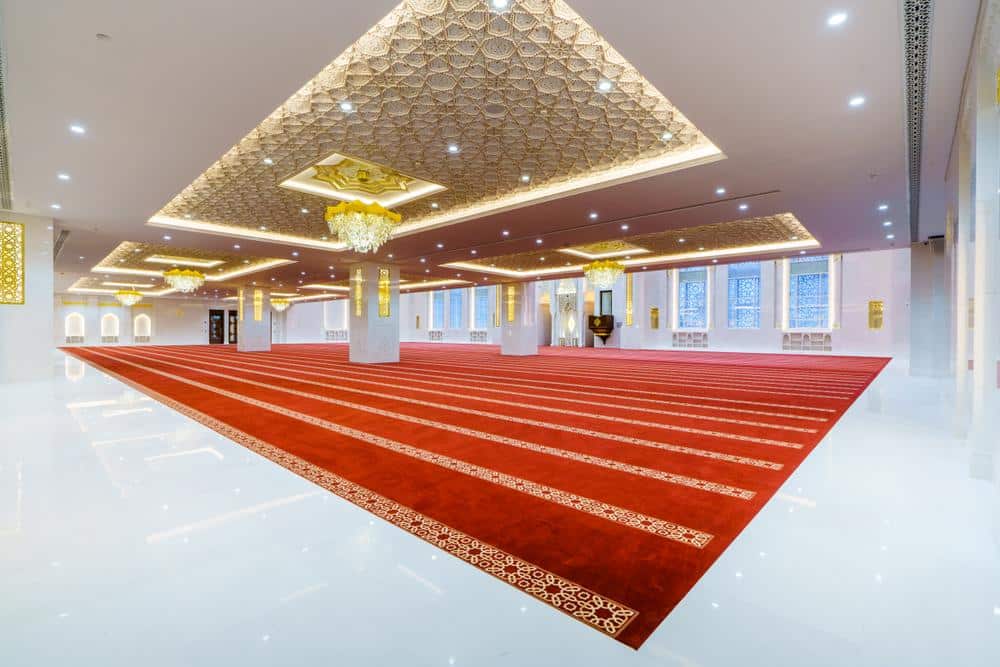
Architecture of Mosque Lighting Design
The academic literature stresses daylighting balance. Under domes you want even, non-glary illumination for reading and ritual.
Light affects perception of space and, therefore the sense of quiet and reverence.
When you use bright, cool, hard light, spaces feel more “active” and less meditative.
Subtle warm light plus soft wall-washing helps reduce visual clutter and promote calm, especially when emitted from Hanging Lights.
Before drawing a single wiring diagram, walk the building with a simple checklist:
- Dome geometry and clerestory windows (how daylight enters).
- Qibla orientation and mihrab location (where visual focus must be highest).
- Ancillary spaces: ablution, corridors, classrooms, exhibition/visitor areas (each has different lux needs).
- Sightlines and vertical volumes — big, high domes benefit from vertical grazing to reveal geometry.
Daylighting Strategy (Domes, Clerestories, Skylights, & the Qibla Effect)
Daylight is, frankly, the poetic advantage mosques have.
Carefully placed clerestory windows and diffusing strategies turn sunlight into a slow moving, reverent show—without glare.
But in the Gulf, daylight must be tempered: east/west exposures carry low-angle glare and heat.
Design moves that work in the UAE:
- Use high-performance fritted glazing or diffusing skylights to maintain daylight without thermal penalty.
- Employ dome window zones to wash the mihrab or central carpet area with soft top light.
- Use light shelves and horizontal shading to let low winter sun in while blocking harsh summer sun.
Research shows orientation (Qibla axis, window placement) materially changes indoor illuminance under domes—so modeling is essential. Don’t guess; model daylight with Radiance/Grasshopper or equivalent.
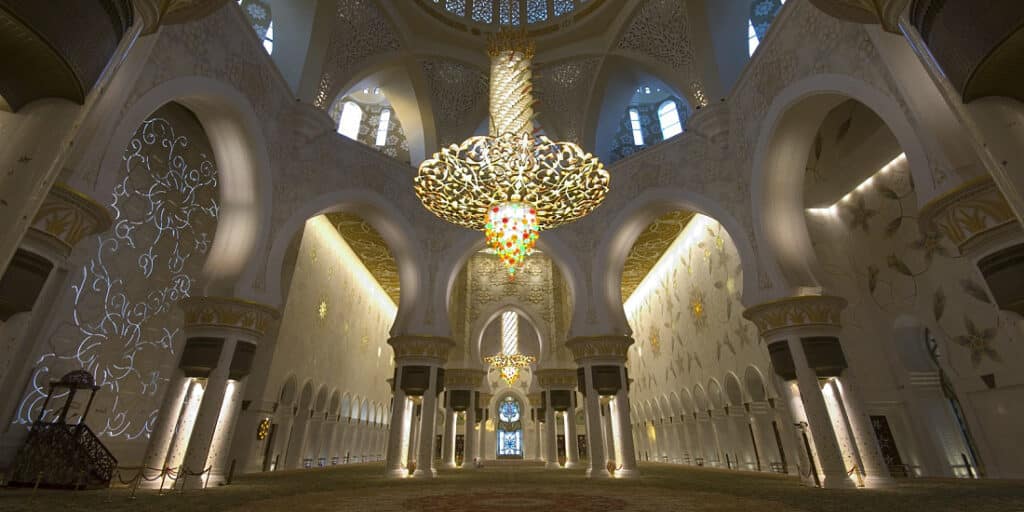
Layered Lighting for Mosque Lighting Design
Mosque lighting is rarely one layer. Successful schemes use at least three:
- Ambient: large chandeliers or pendant systems that give overall, warm illumination and a focal “heart” to the hall. Arresting but (these days) LED-driven for efficiency.
- Task: discreet downlights or adjustable pendants over reading and teaching zones to reach recommended lux for reading Qur’an.
- Accent / Architectural: wall-washers, grazing uplights for columns and dome ribs, linear profiles to outline arcades and minaret geometry. Linea Light’s Sharjah project is a nice example: indirect 2700K elements to avoid glare and create intimacy.
In the UAE context, color temperature matters. 2700–3000K for warm, inviting interiors; slightly cooler whites are sometimes used in learning spaces.
Fixtures & Optics for Mosque Lighting Design
Fixture selection isn’t mere glamour. In UAE mosques, you must weigh durability, maintainability, corrosion resistance, and service access.
Guidelines:
- Chandeliers: prefer LED retrofits inside traditional frames, or custom LED chandeliers with tunable white modules. This keeps the silhouette but reduces power and maintenance.
- Downlights & high-bay: spec dimmable LEDs with tight beam control for columns and carpet; avoid spill onto delicate calligraphy.
- Facade & landscape: stainless or marine-grade housings with appropriate IP rating. Use asymmetric optics to highlight façades/minarets without blinding passersby (Sharjah project uses customized asymmetrical optics).
Also, think physically and ask how many chandeliers hang in very high domes.
Control systems: Why DALI, DMX & Scene-Based Control Matter?
Nobody likes flipping thirty switches. Modern mosque lighting calls for intelligent control layers:
- DALI for individual control & dimming of architectural LEDs and conservation lighting (micromanage lux for artefacts).
- DMX where you have theatrical or exhibition lighting sequences (visitor centers or festival nights). Examples include DMX512.
Time schedules for prayer times (Fajr, Maghrib) that subtly change brightness and color temperature over the day.
Design tip: tie lighting scenes to the mosque’s daily rhythm, not just events; small cues (slightly dimmer before prayer) prime people emotionally.
Conservation & Heritage Lighting
If your mosque includes an exhibition, artefacts, or historic tiles, you need conservation-grade illumination:
Keep artefact illuminance low (often 50 lux or below) and use narrow spectrum or filtered light to prevent UV/IR damage. Michael Grubb Studio emphasizes 50 lux control for artefacts in the Sheikh Zayed visitor exhibition.
Use separately zoned circuits and integrate lux sensors for fail-safe limits.
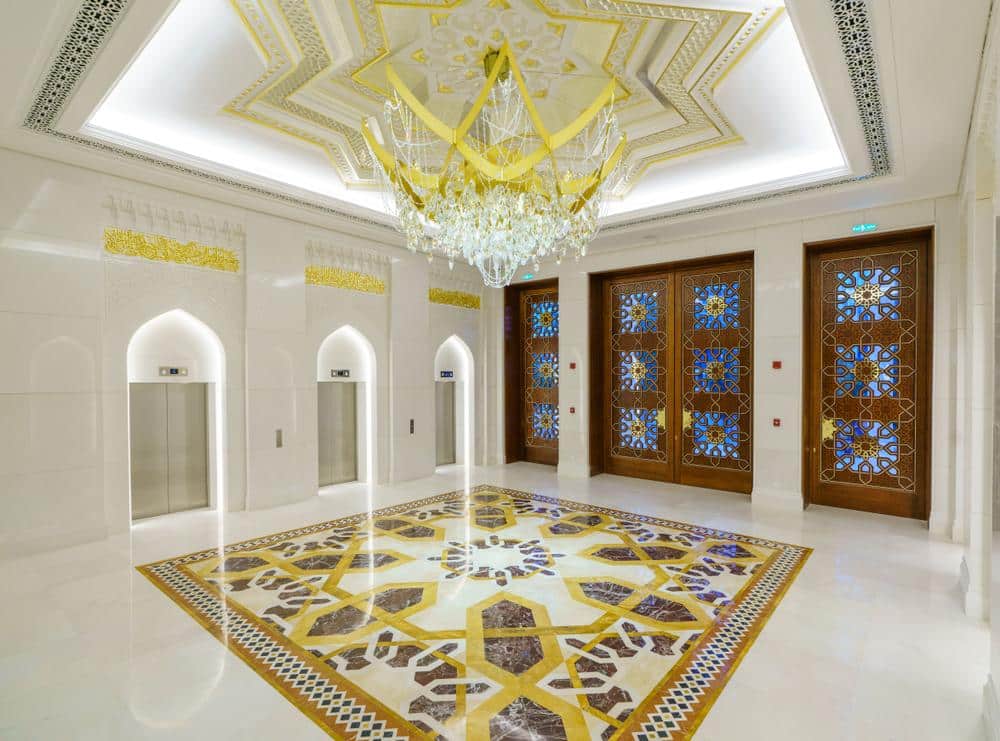
Exterior, Facade, & Landscape Lighting
Mosques in the UAE often double as civic monuments. Exterior lighting must balance pilgrimage and tourism:
- Use concealed uplighting and linear profiles to define domes and arcades; avoid up-lighting that causes glare for drivers.
- Landscape lighting (bollards, step lights) must be low-glare and accessible; Linea Light’s Sharjah work shows how tailored fixtures define approach sequences while keeping a warm color temperature for intimacy.
For major landmarks like Sheikh Zayed, large-scale projector systems and carefully choreographed facade washes can create dramatic national celebrations—but they require coordination with city light ordinances & curfews.
Thermal, Energy, & Maintenance Realities in the UAE Climate
LEDs help, but the Gulf’s heat isn’t kind. Key operational rules:
- Use high-temperature-rated drivers; spec fixtures with thermal management for >40°C ambient.
- Plan for dust ingress and salt-laden air (coastal): choose IP65+ exterior fixtures and a maintenance schedule.
- Lighting can be a large portion of building operational cost; design scenes and schedules tied to occupancy and prayer times to minimize wasted hours.
Case note: Many UAE mosque projects have retrofitted LEDs and saved both energy and maintenance costs compared to legacy incandescent/chandelier lamps.
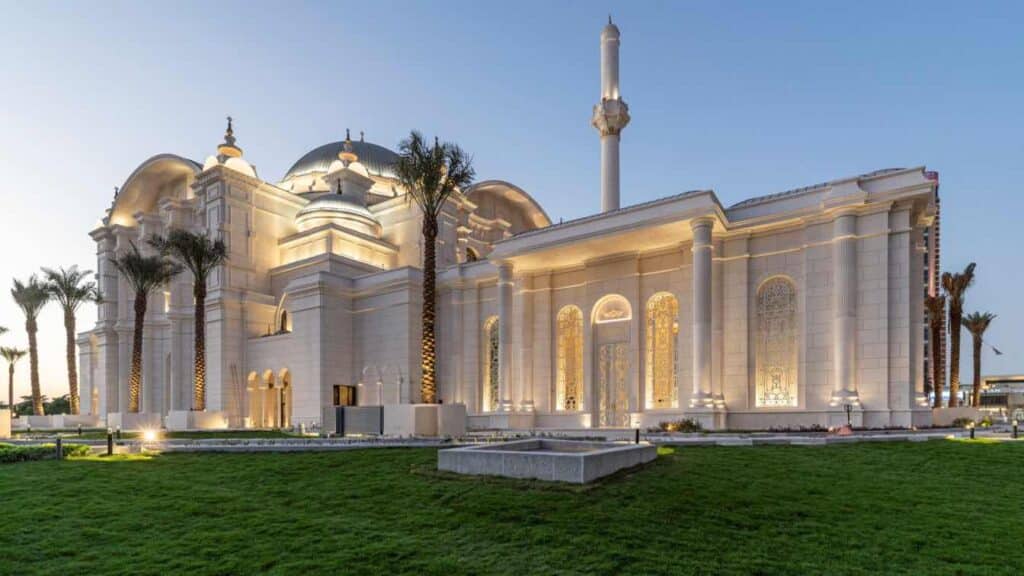
Case Studies of Mosque Lighting Design
Short examples to steal ideas from:
- Sheikh Zayed Grand Mosque (Abu Dhabi): This is an award-winning project that blends daylighting, LED retrofit, and careful exterior illumination; lighting design by Speirs and Major with products by ERCO; visitor center uses precise conservation lighting and DALI control.
- Sharjah Mosque: The full complex lighting using 2700K indirect light, customized outdoor projectors, and linear profiles to define terraces and facades. Great model for balancing prayer intimacy and tourism spectacle.
- Sheikh Rashid bin Mohammed Mosque (Dubai): The coordinated indoor/outdoor project that demonstrates a sitewide approach integrating landscape, wayfinding, and prayer-space lighting.
Final Word
Good mosque lighting reads like a film director’s subtle cues: it focuses attention, frames ritual, and nudges emotion without shouting.
In the UAE, that means respecting heritage and climate, using energy-wise LED and control systems, and making maintenance realistic for long, hot summers.
The best schemes marry the old and the new—Ottoman chandeliers retrofitted with LEDs, domes that still glow with top-light, and digital controls that choreograph the day’s devotional rhythm.
When you get those layers right—daylight, ambient chandeliers, and precise architectural grazing—you’ve done more than illuminate a room: you’ve choreographed a collective pause.
At Blink Lighting, we provide modern and classic mosque lighting designs in the UAE. Contact us now to learn more.
FAQs
What Lux Levels Are Recommended for Mosque Prayer Halls?
Generally, prayer hall ambient lighting is lower (around 100–300 lux) but reading areas / Qur’an study zones should aim for 200–500 lux depending on tasks. Local standards and conservation needs may lower lux near artifacts—academic studies and projects recommend modeling to confirm.
What Color Temperature Is Best for Mosque Interiors in the UAE?
Warm white (≈2700–3000K) is standard for a calm, reverent feel. Use slightly cooler whites only in active learning spaces. Many UAE mosque projects specify 2700K for interiors to avoid glare and to create intimacy.
How Can Traditional Chandeliers Be Modernized Without Losing Heritage?
Keep the visual silhouette but retrofit with tunable LED modules and modern drivers or manufacture custom LED chandeliers with traditional forms. This reduces energy and maintenance while preserving the cultural touchstone.
Should Mosque Lighting Prioritize Daylight or Artificial Light?
Both. Daylight is the most poetic resource but in the UAE it must be controlled (heat, glare). Use daylight as the primary ambience and complement with layered artificial lighting for consistency across prayer times and at night. Model daylight performance early in design.
What Control Systems Are Recommended?
DALI for architectural luminaires and conservation control; DMX where theatrical or synchronized effects are needed. Integrate timers for prayer times and override options for events.
How Do You Balance Touristic Lighting (For Visitors/Photography)?
Create separate scenes: a “worship” scene with restrained, warm light and silent transitions; a “visitors” or “tour” scene with slightly brighter, accent lighting. Control access to tour scenes via schedule or staff override; never let visitor scenes override conservation caps.

